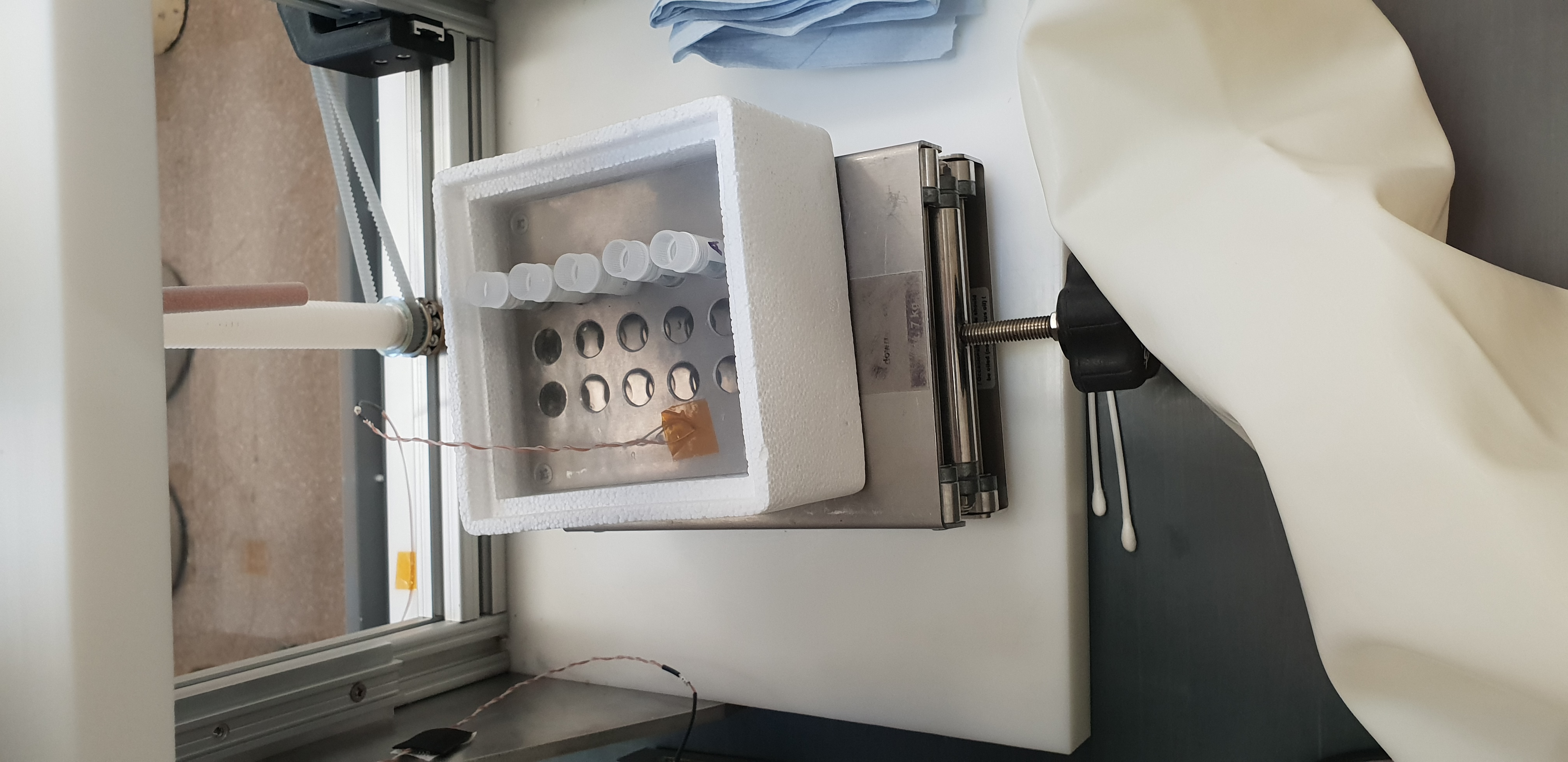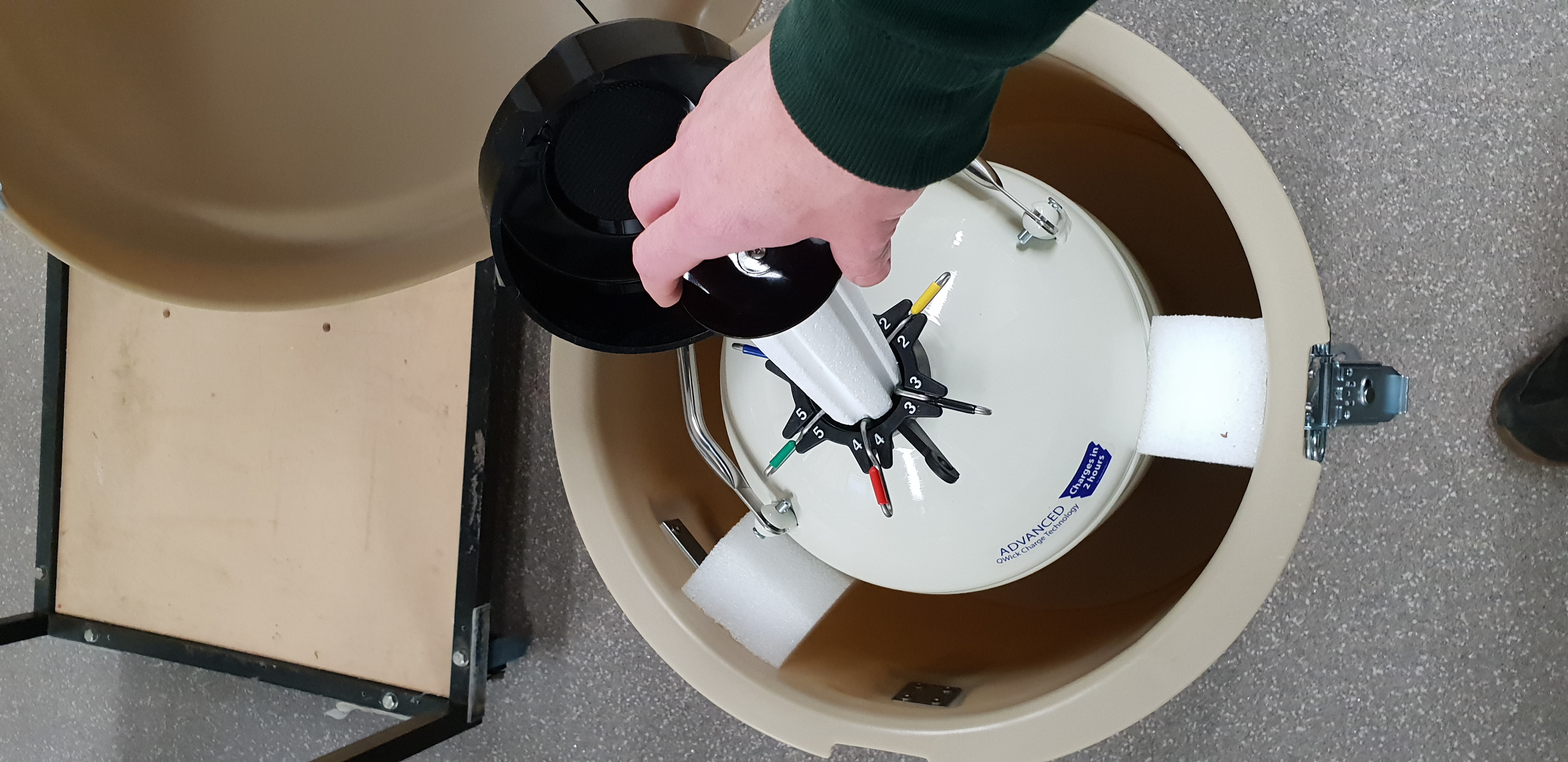2nd Version#
HGW Setup#
OU / Helen Fraser

Fig. 54 source:#
The purpose of this experiment is to produce µm HGW ice particles. This is achieved by spraying µm water droplets in liquid ethane, the most suited cryoliquid to achieve high cooling rates. This is a technique used in cryobiologie to freeze biological samples.
Note
Hence, this setup could open the doors for sample preparation that extend far beyond the scope of astronomy!
Important to mention for business case
Initial results#
Initial Neutron scattering results show that our ices present some amorphicity.
Ice manipulation#
One of the most difficult aspect when dealing with amorphous ices is that when pulled out of their cold medium, they will very quickly warm up and crystalise. Having an in-house characerision technique is the best option to mitigate those problems
Experimental limitations
Particles need to remain at liquid nitrogen temperature or they will crystalise
Ethane is present so may be best to have a prep lab in-house



